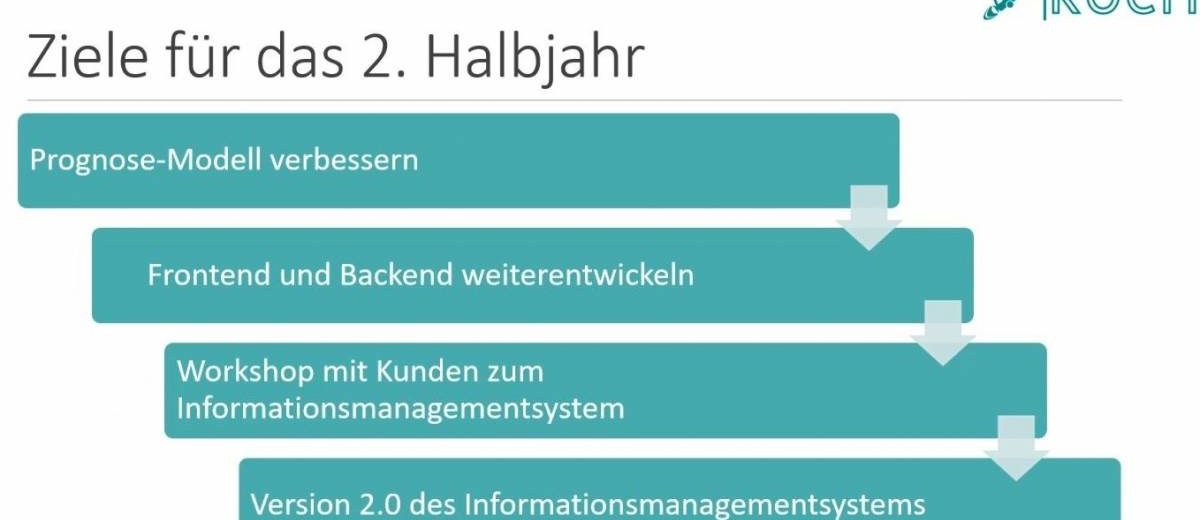Digital presentation of milestones and project goals for the second half
In light of the current developments surrounding COVID-19, the mid-year presentation of the master’s student group at the University of Oldenburg took place online and was a complete success.
Via Microsoft Teams, the students presented the current status of the ROCIT information management system, which aims to improve delay predictions in bus traffic using machine learning. After introducing the development teams (frontend, backend, and data warehouse), the project architecture, and the applied Scrumban process, they also showcased the conducted requirements analysis, the technologies used, and the successful implementation of Continuous Integration & Continuous Delivery.
ROCIT shines with new features and differentiated settings
Afterwards, a live demo of the application was presented, and it now offers quite a lot. By entering a time on the map, the location of individual buses in a region at the desired time can be tracked. Additionally, individual buses, stops, and lines can be grouped and visually customized to provide a better overview of the fleet. The new dashboard system has received additional features and offers bus companies the ability to analyze the collected data from their bus fleet. Bus operators can view their data through predefined widgets from the open-source visualization software Grafana or via custom-developed widgets displayed as charts.
The data sources used for the prediction undergo an ETL process, are processed in a data warehouse (DWH), and factors influencing bus arrivals are identified. To calculate the prediction accordingly, machine learning processes were applied, and finally, a neural network was trained based on the data from the DWH.
Outlook for the second half
The group of twelve master’s students has already achieved so much, but half of the time still lies ahead of them. For the second half of the year, the agenda includes improving the prediction model, further developing the frontend and backend, and holding another workshop with clients, so that version 2.0 of the ROCIT information management system can be publicly presented at the University of Oldenburg at the end of September. A poster outlining the current development status, including the roadmap for the prediction model, is available here.

